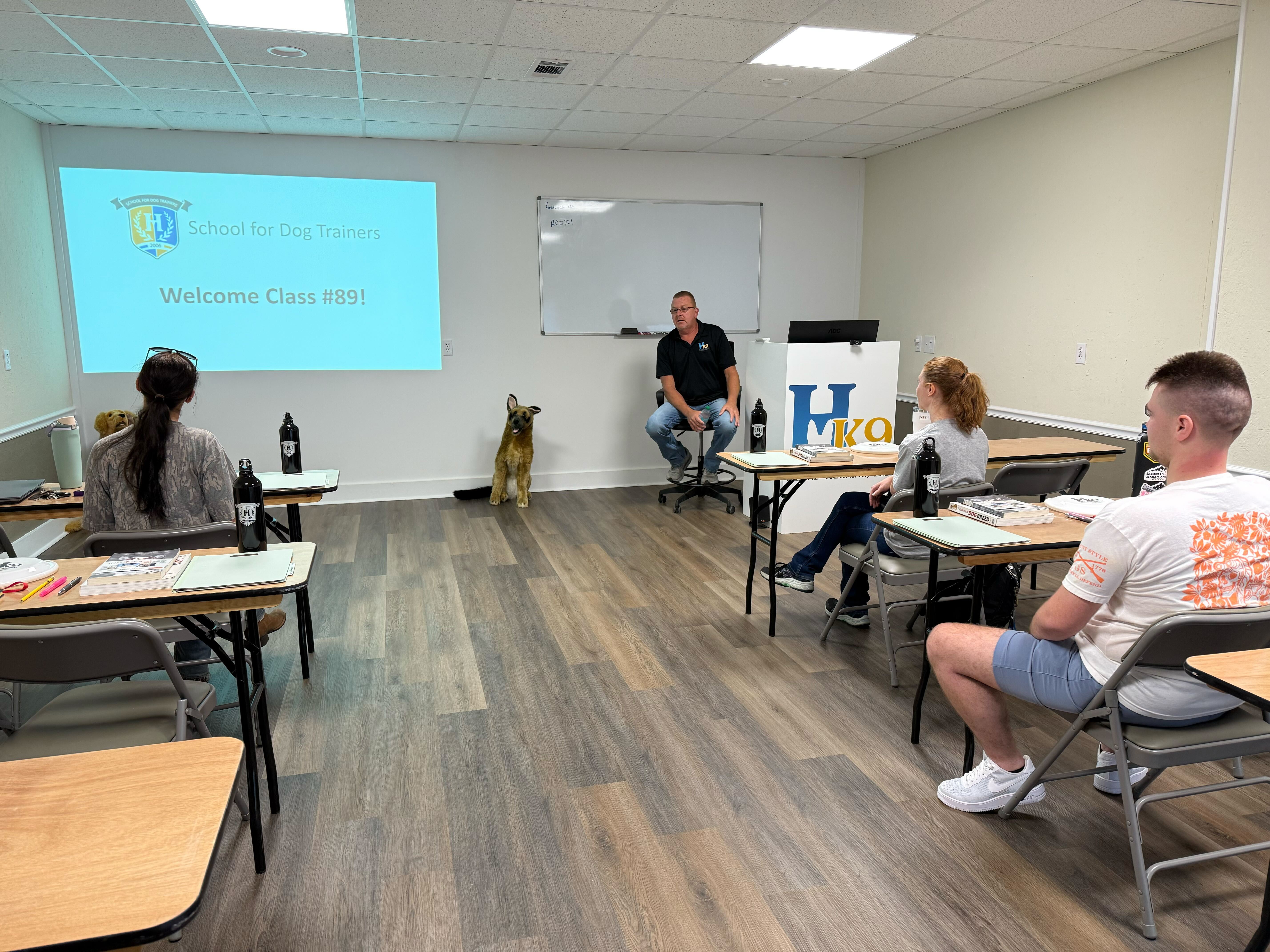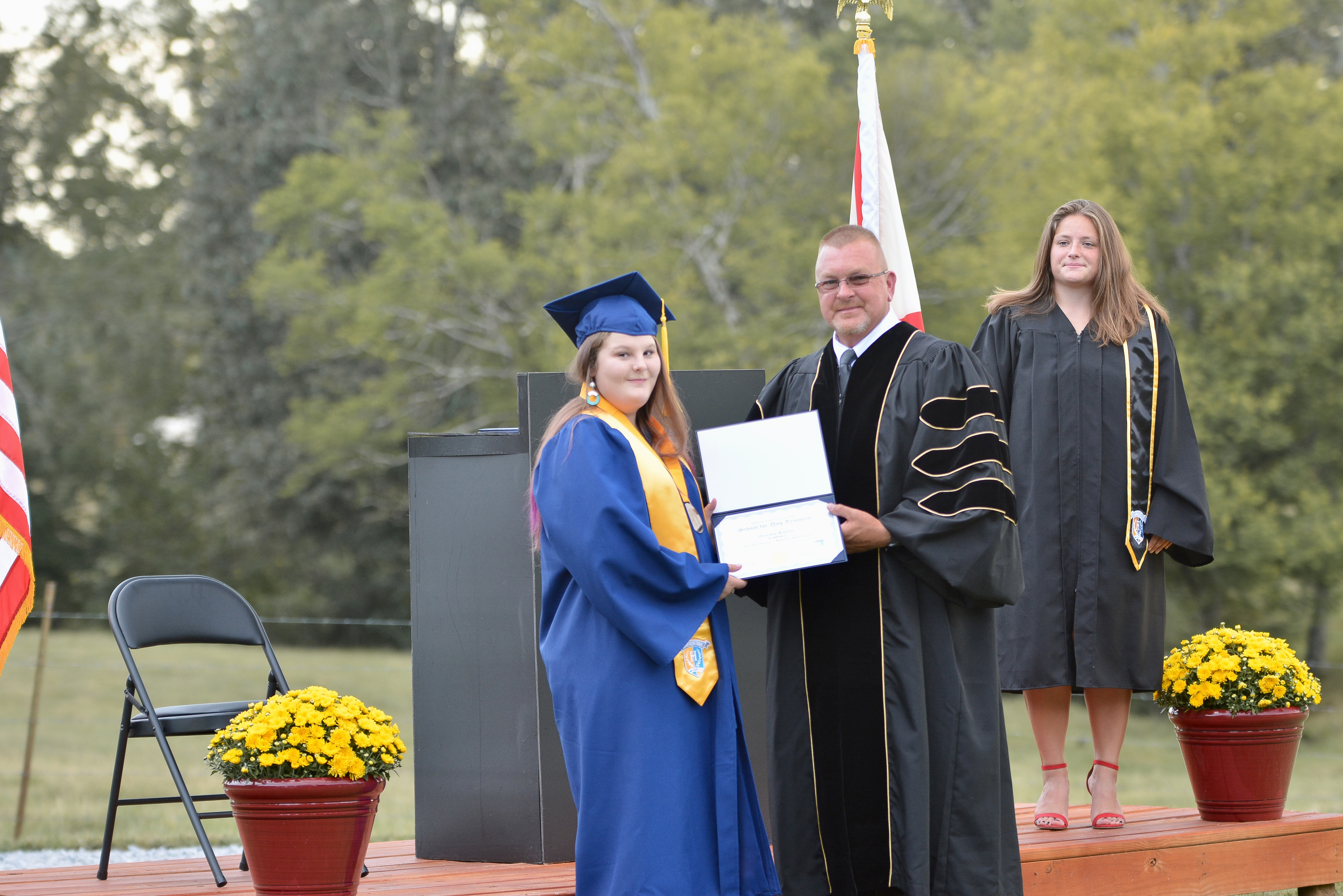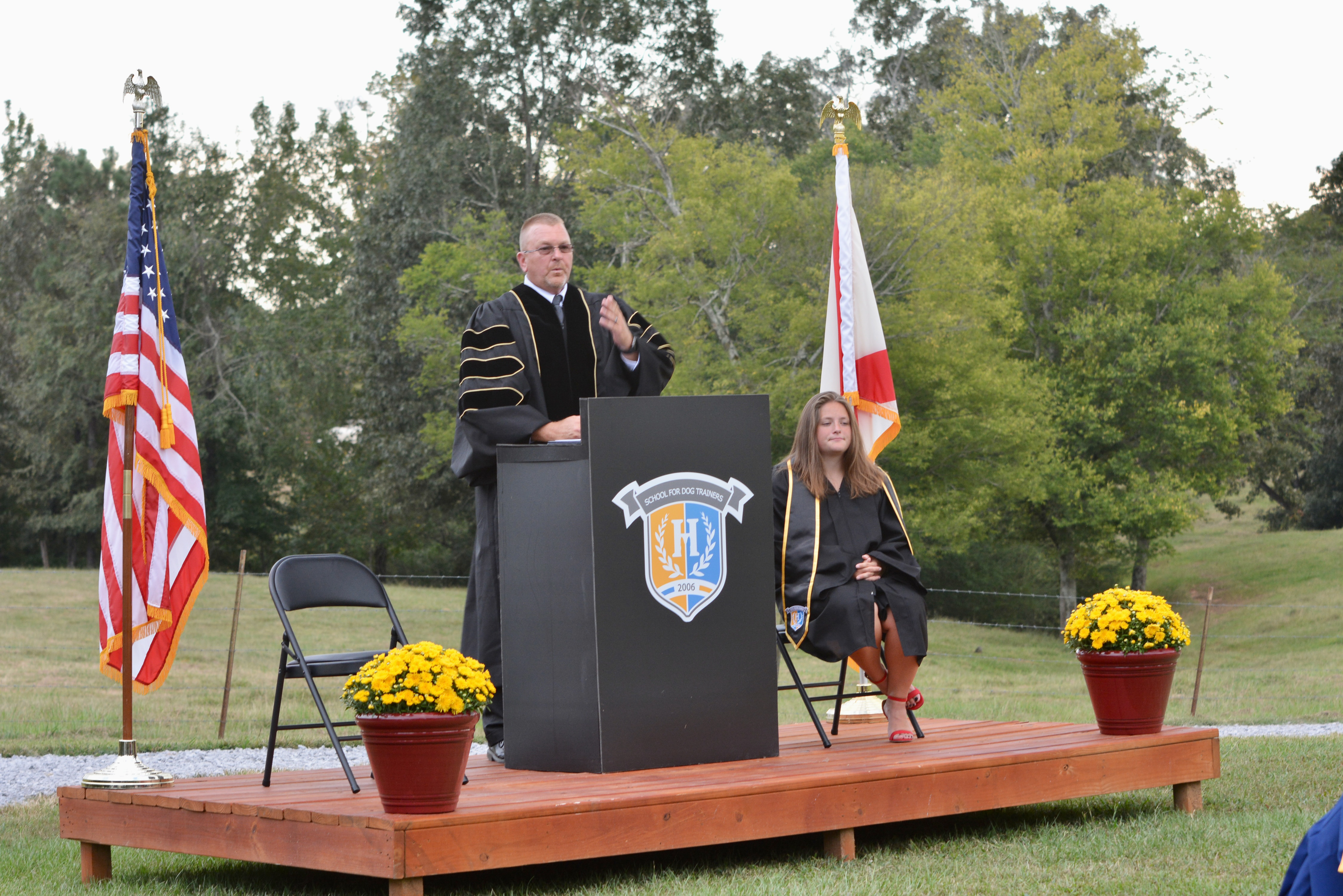At the School for Dog Trainers, our team of expert instructors provides unparalleled insights into the world of dog training. Across our three campus locations, our instructors provide their own unique perspectives – from teaching the theories that underpin canine behavior, to their experiences of working with clients and improving their relationship with their dogs. In addition to pet dog training, our team also has real-world experience of training and delivering service dogs to help individuals with disabilities, and has worked with law enforcement teams around the world to deliver best-in-class Police K9s.
Corey Archer is the Training Director at our Southeast Campus in Alabama, and he has extensive experience to draw upon as he teaches the next generation of dog trainers. Corey helps to lead the programs taught at the Southeast Campus, which include:
- Dog Obedience & Behavior Program
- Police K9 Trainer Program
- Detection Dog Trainer Program
- Protection Dog Trainer Program
- Search and Rescue Dog Trainer Program
We recently caught up with Corey for a Q&A interview, where we learned how Corey got his start in the dog training industry, and what guides his training philosophy when teaching his students.
Corey, can you tell us about your journey into dog training and what inspired you?
When I was in my early 20s, I was volunteering at a local volunteer Fire Department. While doing this, I became interested in training a Wilderness Search and Rescue dog. I didn’t have a clue as to what I was doing, and didn’t have the income to pay for a dog or any type of formal training for the dog that I had (which was a German Shepherd). So, I just kind of winged it.
A few years later, I was hired by the Sylacauga Police Department in Alabama. After completing the Academy, one of my coworkers and I approached the Chief about starting a K9 unit. He approved it, but did not allow for any funding to purchase the K9s. So, we located 2 retired K9s from other departments and began training with them. We were being trained by the Sgt. of Birmingham Police Department’s K9 unit. He was kind enough to let us train with them for free! That’s how I got started and never looked back.
A few years later, I transferred to the Warrior Police Department and took over the K9 position from a handler that no longer wanted the dog. I continued to attend training in Birmingham with this dog, and worked her for about six years. When she passed, I began searching for another dog, and that is when I was referred to Highland Canine Training. This was back in 2007. My wife and I travelled to Harmony, NC one weekend to look at 2 dogs that were available and that is when I met Jason and Erin Purgason. The city purchased one of the dogs. He was a dual purpose German Shepherd named Iso. I returned a short time later, and attended a four-week Handler course. During this training, I became good friends with Jason and Erin and learned that there was more than one way train Police K9s.
I continued to return to Highland each year for training and certification. In 2013, I completed a 12-week Canine Training and Behavior Modification Course at Highland. I had to do it a little bit differently than the average student. I worked for a small Department, and could not leave for 12 consecutive weeks. So, I had to divide it up into 2 week intervals. Upon completing the course, I began working as a contractor for Highland Canine in Alabama training pet obedience. I continued working at the police department and trained dogs as a part time job. In 2020, I retired from the police department and began training full time. This is when we started the Southeast Campus here at the School for Dog Trainers.

How would you describe your dog training philosophy and how do you integrate that philosophy into your instruction?
I believe that having a good foundation in dog behavior in general is the key to training dogs. That would include several things:
- Be able to observe a dog’s body language and having the knowledge to recognize its meaning.
- Having a good understanding of operant conditioning and how to apply it to all dogs.
- Understanding how dogs learn, and the importance of patience.
I also believe in the importance and advantage of being a balanced trainer and the correct use of training tools.
I like to use my knowledge of these things, combined with the experiences that I have had over the last 25 years or so (good and bad), and add in my attempt at humor while teaching.
What types of programs are offered at the Southeast Campus?
Here at the Southeast Campus, we offer a variety of specialized courses. We offer 6, 8, and 12 week courses in Canine Training and Behavior Modification, Police K9, Detection, Protection, and Search and Rescue.
With each of the 12 week courses, our students learn a solid background in dog training in general. This foundation of knowledge will prepare them for success in any of the specialty fields of dog training. The 6 and 8 week courses are designed for those that already have that foundation and are looking to expand their knowledge in a specific area of dog training.
What makes the Southeast Campus unique as a training environment?
In my opinion, there are several factors that make our Southeast Campus unique.
First of all, we focus on more hands-on training with multiple dogs more than just classroom lectures and book work. I think that hands on experience is essential.
Secondly, our classes are usually smaller than others. This allows me and our staff to be readily available for questions, demonstrations, and anything else that a student may need.
Lastly, our students have the opportunity to experience most of the aspects of the dog training industry while attending the Southeast Campus. At our facility we also operate a Board and Train program for pet dog owners, we offer Private Lessons, we have multiple trainers on site, we train with local Law Enforcement, and frequently work with behavior modification cases. It is our goal to allow our students to observe and participate in all of these activities as much as possible.
What does a typical week look like for a student attending a program at the Southeast Campus?
Typically, we begin each day at the training facility. Group obedience is usually the first task of the day. Then, we allow the students time to work with their assigned practical dogs. After that, we switch locations to the classroom, and I lecture on the week’s topic until we break for lunch.
After lunch we normally return to the classroom to resume lecturing. After this, we end the day at the training facility working their assigned dogs again. This is a typical day. However, there are several factors that can and will alter that schedule – weather being the most common. We try our best to have the students in the classroom during inclement weather. Also, if one of our trainers has a private lesson or a board and train appointment, I try to allow the students to observe those meetings. This allows them to see all aspects of the business. I try to finish up lectures on Thursday and test on that information on Friday.

Given your extensive background in working dogs, how do you translate that into your teaching philosophy?
I try to use my experiences of handling and training with working dogs during teaching as “real life” examples of dogs and their behavior. Those experiences can translate into many pet dog behaviors and help the students understand different situations. I also like to use my many mistakes throughout the years as examples of what not to do.
What would you say to someone who is considering a career as a dog training professional?
This question is more complex than the normal person would expect. First of all, I tell people that communication is a huge portion of being successful in this industry. This is due to several factors:
- They will spend just as much time (if not more) talking to potential clients and / or current clients. Being able to communicate with these people and demonstrate your knowledge in this field is critical.
- Education is also critical. Spend as much time as they can building their foundation in the dog’s body language and what it means, learning theories, training methods, and behavior modification. Never stop learning and willing to try new methods.
- Patience! Patience with the dogs, the clients, and the industry. This industry can fluctuate and is always evolving. We must be patient and always strive to be successful.
A wise man once told me, “I can teach you how do all the cool things in the industry (Police Dogs, Protection Dogs, Search and Rescue Dogs, Sport Dogs, etc.), but you will probably go broke if you don’t train pet dogs. He was, absolutely right. So, I tell everyone to focus on the pet dog industry first and then find a specialty portion of the training industry that they are passionate about, learn all they can about, practice it, and then offer that to their clients as well.

